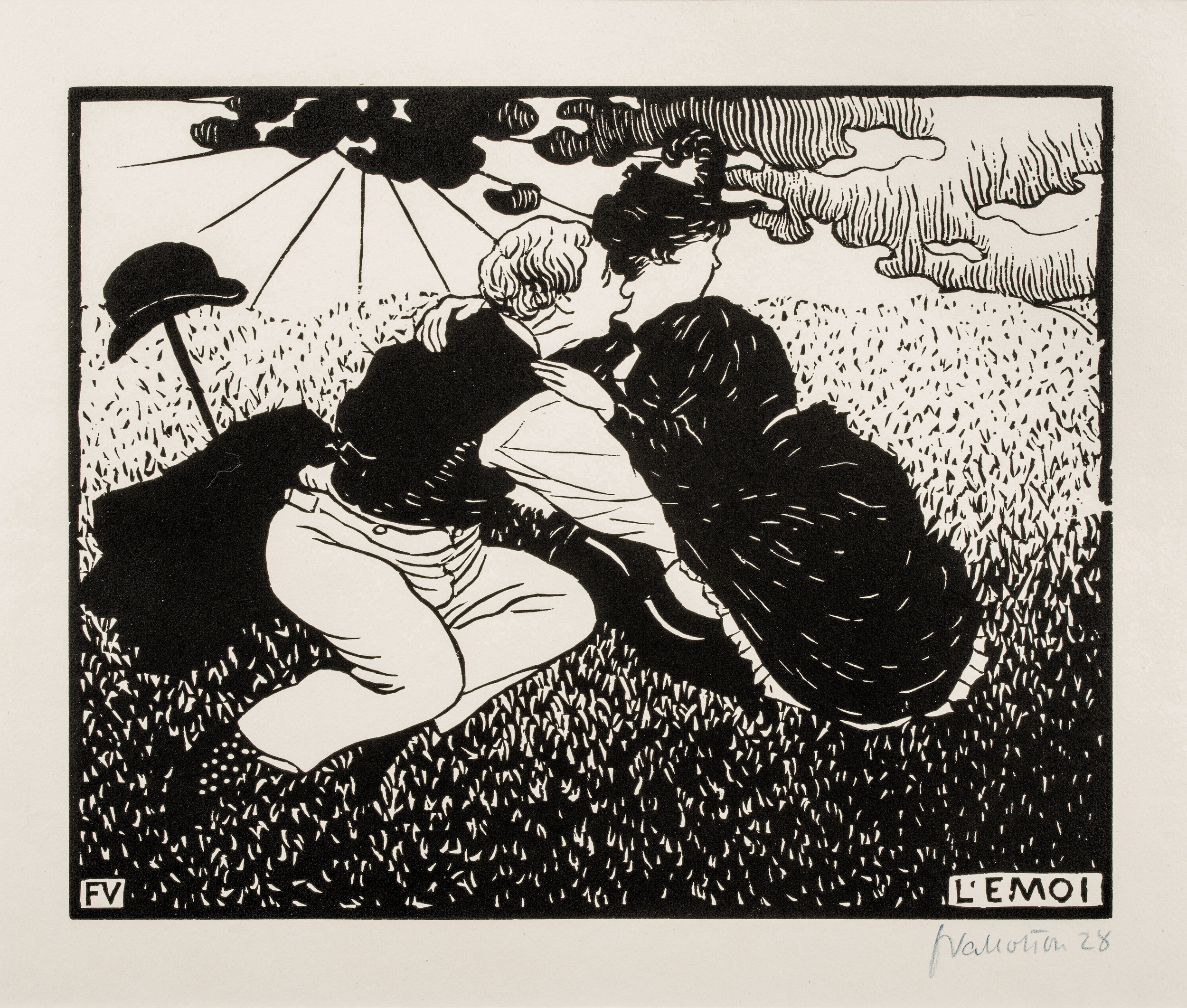Born in Lausanne in 1865, Félix Vallotton becomes a naturalised French citizen in 1900. Known mainly for his work as a painter, engraver and illustrator, he is also active as a writer. At sixteen he leaves Switzerland for Paris, taking classes at the Académie Julian.
When he begins to do woodcut engraving in 1891, he reconnects with the simplicity of a technique that has fallen into disuse, breathing vigour and renewed life into the medium. His engravings ironically describe the society around him, which he scrutinises with a sharp and at times cynical eye.
A friend of Édouard Vuillard, Pierre Bonnard and Maurice Denis, he joins the Nabis in 1892 and plays an active role in Paris’s literary, artistic and political avant-garde. Formally he owes a great deal to the influence exercised by the French group: his palette grows lighter, his figures become stylised and bright colours appear. At the turn of the century, he separates from his companion Hélène de Chatenay and marries the daughter of the great art dealer Alexandre Bernheim. Vallotton now focuses professionally on painting and spends most of his time in France.
His pictorial output is wide ranging. A portraitist and painter of the private world of interiors but also of still lifes, female nudes and landscapes, he combines vivid hues and novel points of view. Vallotton elaborates a singular style that announces in some ways the early stages of surrealism. Despite the upheavals provoked by the First World War, he continues to paint, producing in particular vast war compositions and numerous landscapes. Suffering from cancer, he dies from complications following an operation at the age of sixty. His works now hang in the most important museums of Europe and the United States.
When he begins to do woodcut engraving in 1891, he reconnects with the simplicity of a technique that has fallen into disuse, breathing vigour and renewed life into the medium. His engravings ironically describe the society around him, which he scrutinises with a sharp and at times cynical eye.
A friend of Édouard Vuillard, Pierre Bonnard and Maurice Denis, he joins the Nabis in 1892 and plays an active role in Paris’s literary, artistic and political avant-garde. Formally he owes a great deal to the influence exercised by the French group: his palette grows lighter, his figures become stylised and bright colours appear. At the turn of the century, he separates from his companion Hélène de Chatenay and marries the daughter of the great art dealer Alexandre Bernheim. Vallotton now focuses professionally on painting and spends most of his time in France.
His pictorial output is wide ranging. A portraitist and painter of the private world of interiors but also of still lifes, female nudes and landscapes, he combines vivid hues and novel points of view. Vallotton elaborates a singular style that announces in some ways the early stages of surrealism. Despite the upheavals provoked by the First World War, he continues to paint, producing in particular vast war compositions and numerous landscapes. Suffering from cancer, he dies from complications following an operation at the age of sixty. His works now hang in the most important museums of Europe and the United States.















